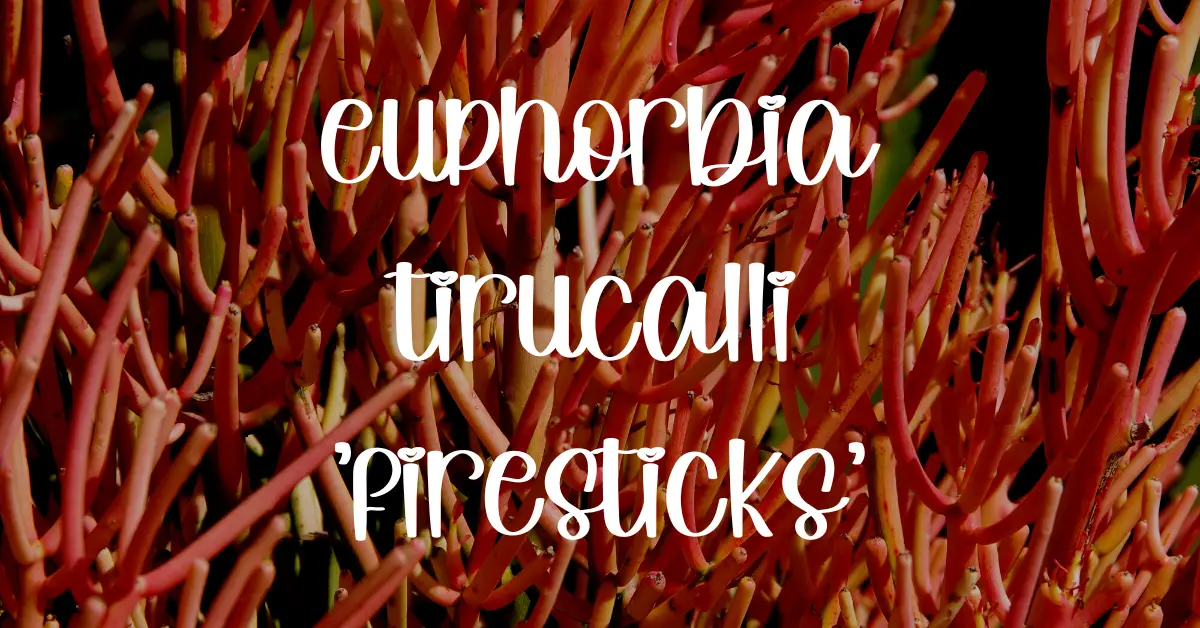Euphorbia tirucalli, commonly known as ‘Sticks on Fire’, ‘Fire Sticks’ or ‘Pencil Cactus’, is a unique succulent plant that adds a touch of vibrant color to any indoor or outdoor space. With its striking red-orange stems and minimal care requirements, it has become a popular choice among succulent enthusiasts. In this comprehensive care guide, we will explore everything you need to know about growing and maintaining Euphorbia tirucalli ‘Sticks on Fire’, including its appearance, care needs, propagation methods, common problems, and more.

Dig in!

Appearance and Growth
Euphorbia tirucalli ‘Sticks on Fire’ is a succulent shrub that can grow up to 10 feet tall in the right conditions. It features pencil-thin, cylindrical stems that emerge from a central trunk. The stems are a bright red or orange color, which intensifies when exposed to sunlight. You wouldn’t even notice them, but the succulent has small, oval-shaped leaves at the tips of the stems that are inconspicuous and quickly fall off, making the stems the main attraction.
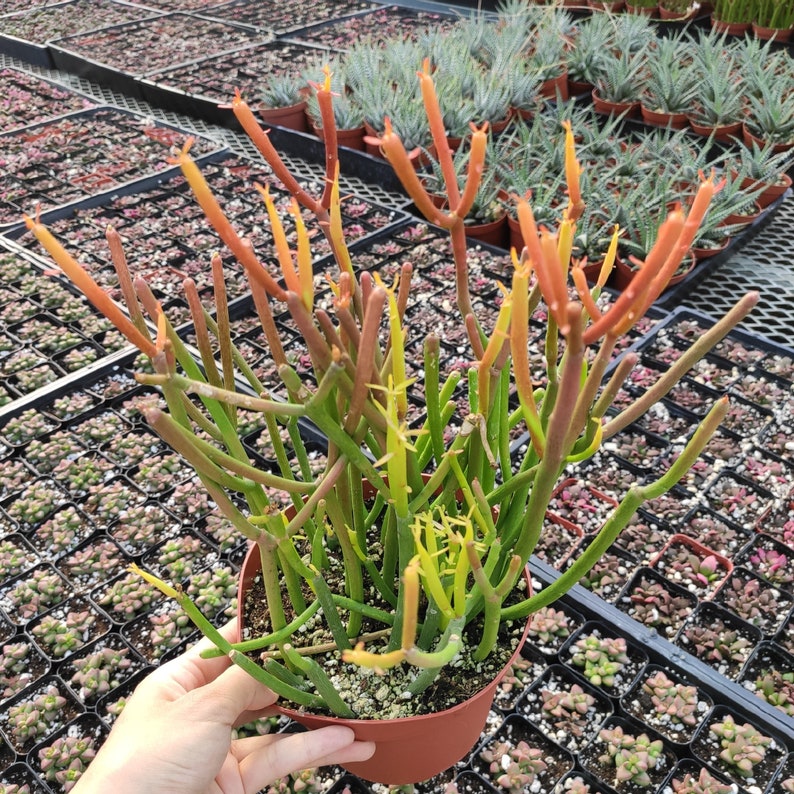
Source: Etsy
Flowering and Blooming
While Euphorbia tirucalli ‘Sticks on Fire’ is primarily grown for its fiery looking, attractive stems, it does produce small, inconspicuous yellow flowers as Euphorbias often do. These flowers typically appear in the late winter or early spring, though blooming can vary depending on the growing conditions and climate. The flowers are not the main focus of this succulent, as its visual appeal mainly stems from the vibrant color of its stems.
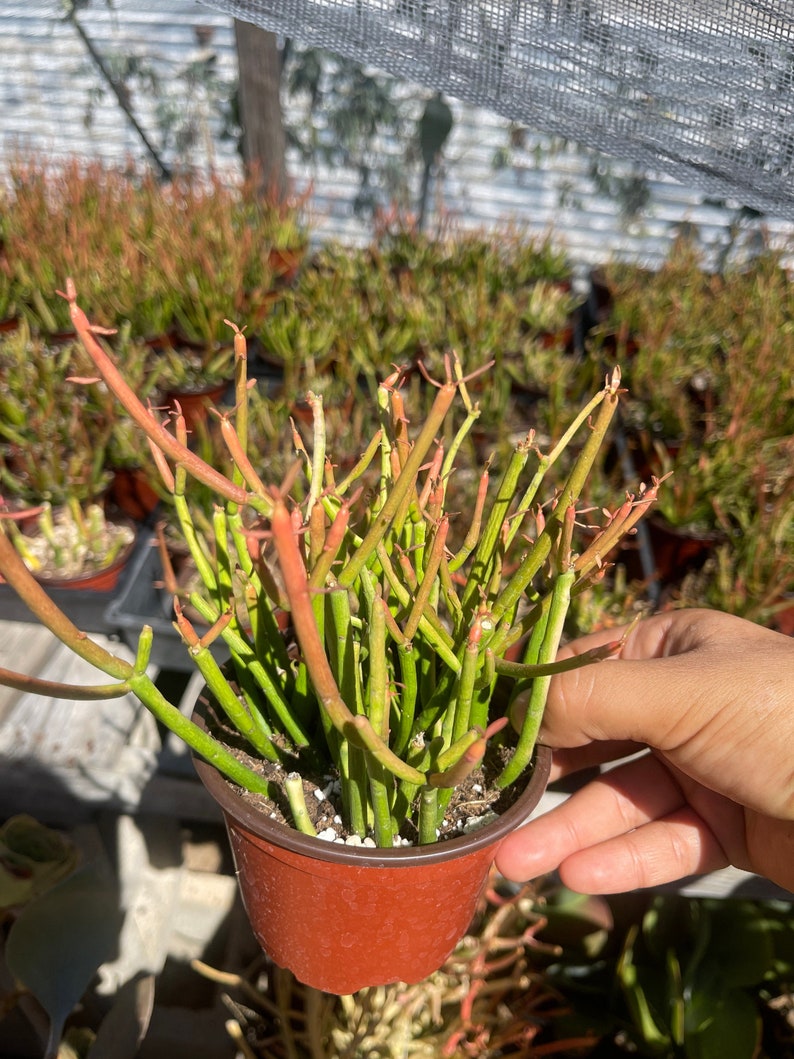
Source: Etsy

Euphorbia tirucalli ‘Sticks on Fire’ Care Requirements
Light Requirements
Euphorbia tirucalli ‘Sticks on Fire’ thrives in bright light conditions and prefers full sun. It can tolerate partial shade, but prolonged exposure to low light levels may cause the succulent to become leggy and lose its vibrant coloration. When growing the succulent indoors, place it near a south-facing window or provide artificial grow lights to ensure it receives adequate sunlight.
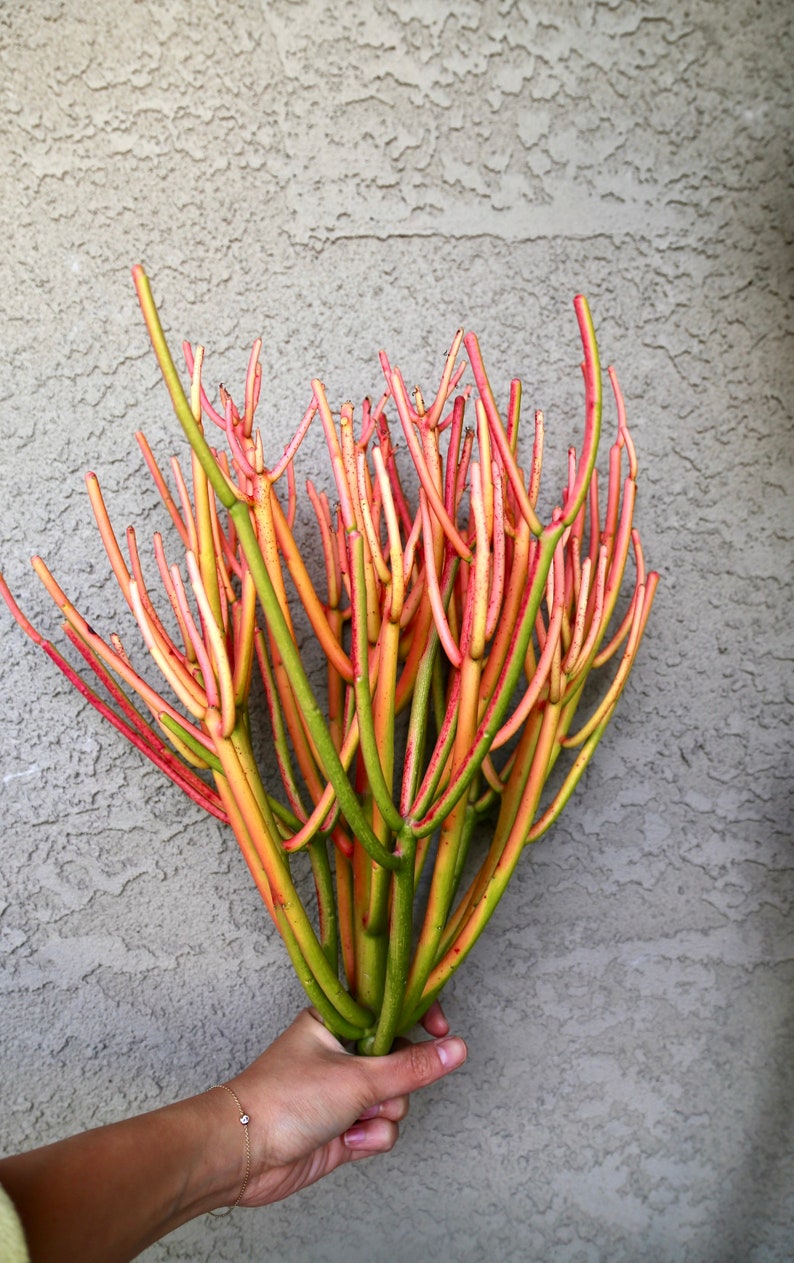
Source: Etsy
Watering
As a succulent, Euphorbia tirucalli ‘Sticks on Fire’ has low water needs and is highly drought-tolerant. It is crucial to allow the soil to dry out completely between waterings. Overwatering can lead to root rot and other moisture-related issues. During the active growing season, water the succulent sparingly, about once every two to three weeks. In winter, reduce watering frequency to once a month or even less, as the succulent goes into a dormant state.
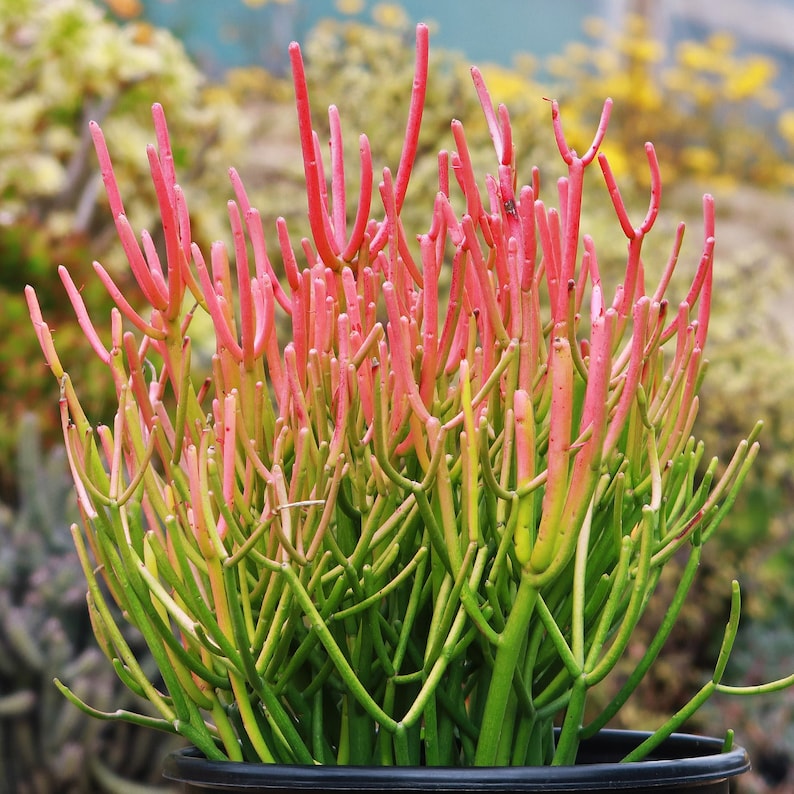
Source: Etsy
Soil Requirements
To provide optimal conditions for Euphorbia tirucalli ‘Sticks on Fire’, use a well-draining soil mix specifically formulated for succulents and cacti. These soil mixes typically contain a combination of organic matter, such as compost or peat moss, and inorganic materials like perlite or pumice. The well-draining nature of the soil ensures that excess water does not accumulate around the roots, preventing rot and other moisture-related problems.
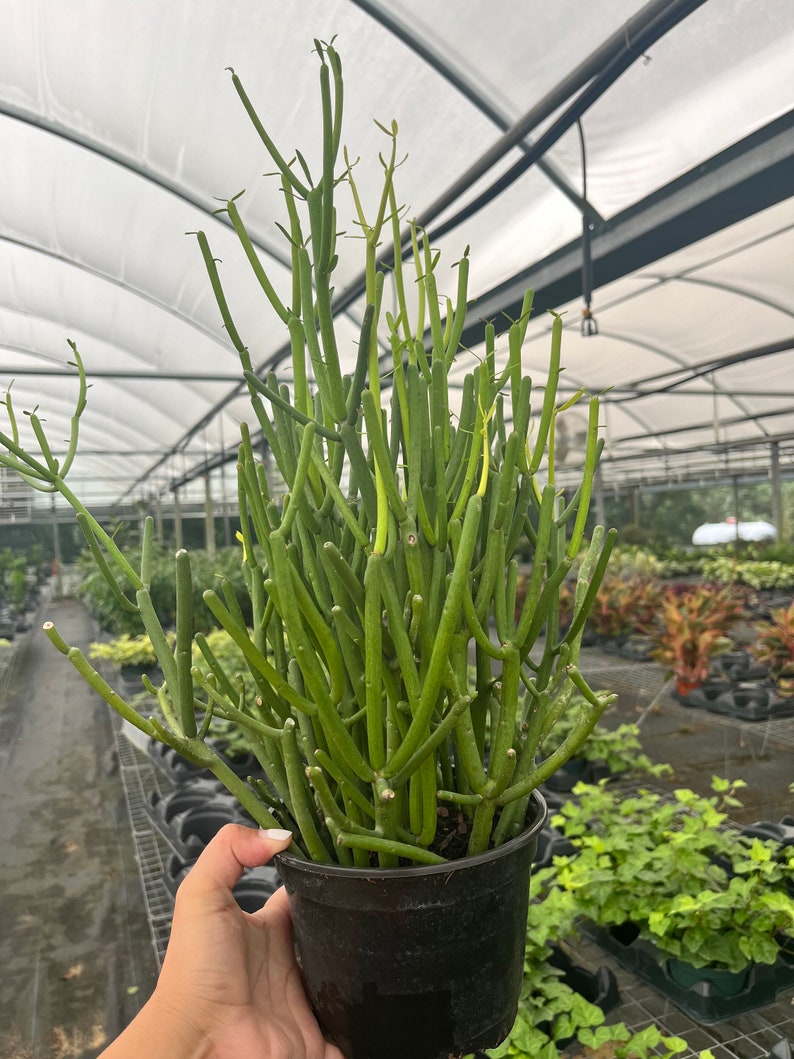
Source: Etsy
Temperature Tolerance and Hardiness Zones
Euphorbia tirucalli ‘Sticks on Fire’ is native to arid regions and is best suited for warm climates. It can tolerate a wide range of temperatures, from 50°F (10°C) to 100°F (38°C). However, it is not frost-tolerant and cannot survive in freezing temperatures. The ideal USDA hardiness zones for growing Euphorbia tirucalli outdoors are 9 to 11. In colder regions, it is best to grow the succulent in containers that can be brought indoors during the winter months.
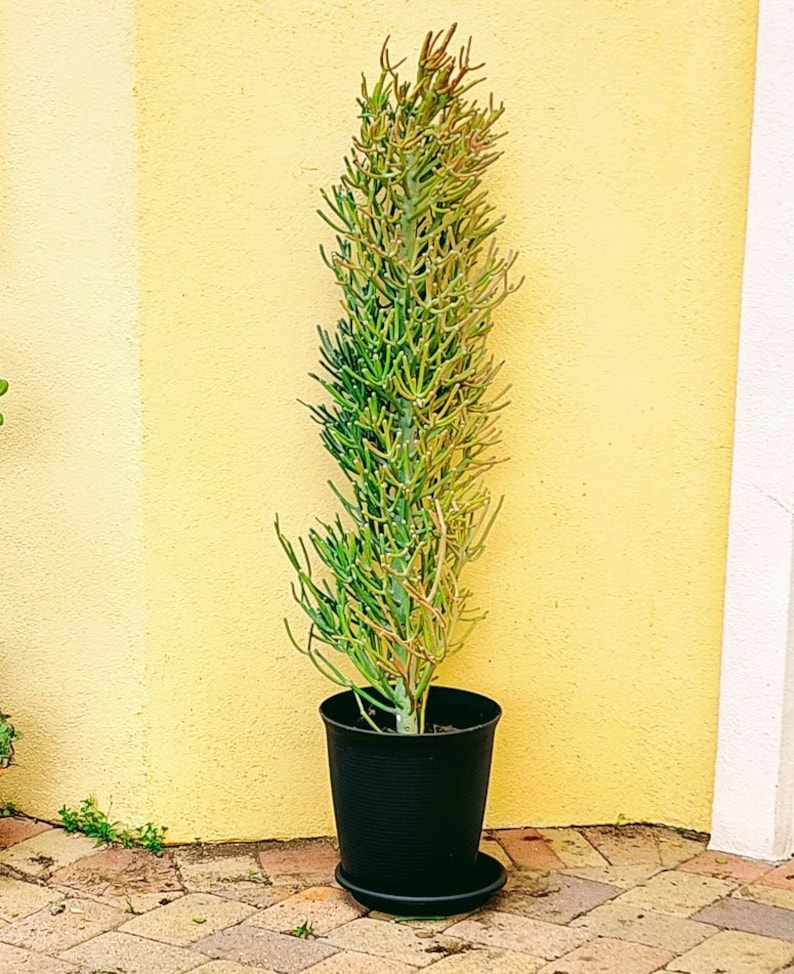
Source: Etsy
Fertilizing
Euphorbia tirucalli ‘Sticks on Fire’ is a relatively low-maintenance succulent when it comes to fertilization. During the active growing season, which is typically spring and summer, you can feed the ‘Fire Sticks’ with a balanced liquid succulent fertilizer diluted to half strength. Apply the fertilizer once a month to provide the necessary nutrients for healthy growth. In the dormant season, it is best to avoid fertilizing as the succulent’s growth slows down.
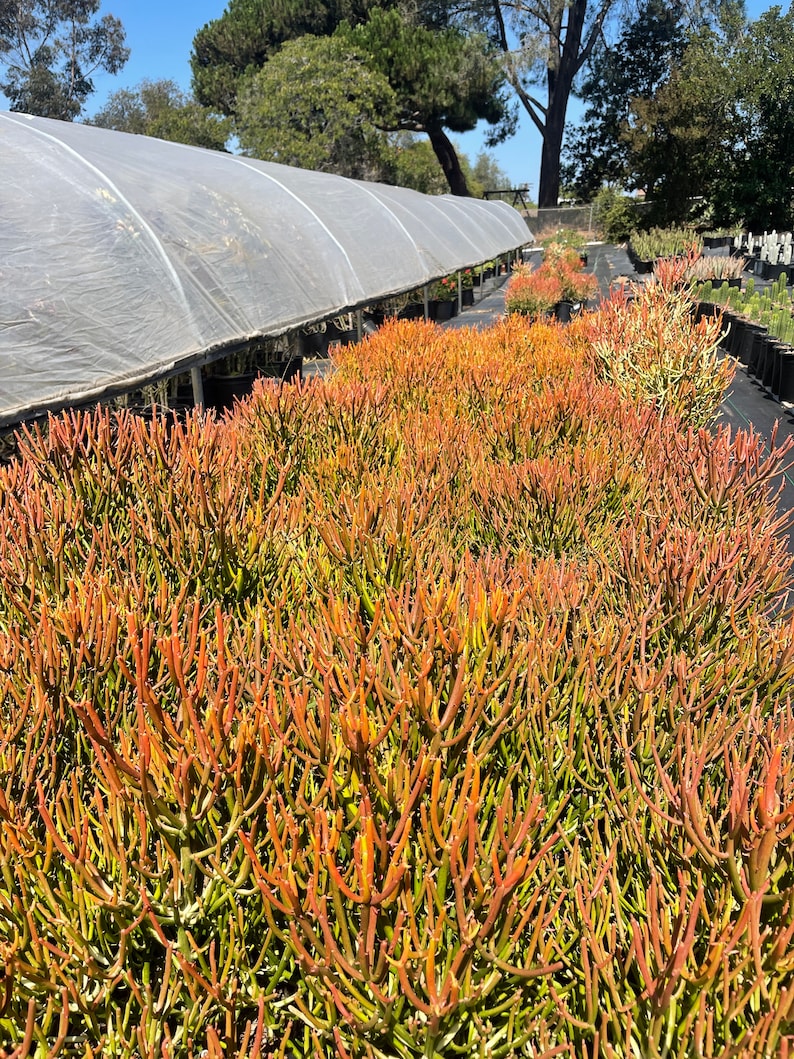
Source: Etsy
Repotting
Euphorbia tirucalli ‘Sticks on Fire’ has a slow to moderate growth rate and does not require frequent repotting. Repotting is usually necessary when the ‘Fire Sticks’ outgrows its current container or when the soil becomes compacted and loses its drainage properties. When repotting, choose a pot that is slightly larger than the current one and use a well-draining succulent soil mix. It is recommended to repot the succulent every two to three years or as needed depending on how quickly the soil compacts.
When you’re rooting or transplanting your succulents and cacti, use SUPERthrive to help reduce the chance of transplant shock and grow a strong root system.
Euphorbia tirucalli ‘Sticks on Fire’ Propagation Methods
The easiest way to propagate Euphorbia tirucalli ‘Sticks on Fire’ is through stem cuttings. To propagate, take a stem cutting of about 4 to 6 inches in length, making sure to use a clean, sharp knife or shears. Allow the cutting to dry and callus for a few days before placing it in a well-draining succulent soil mix. Water sparingly and provide bright, indirect light. Within a few weeks, roots will start to develop, indicating successful propagation.
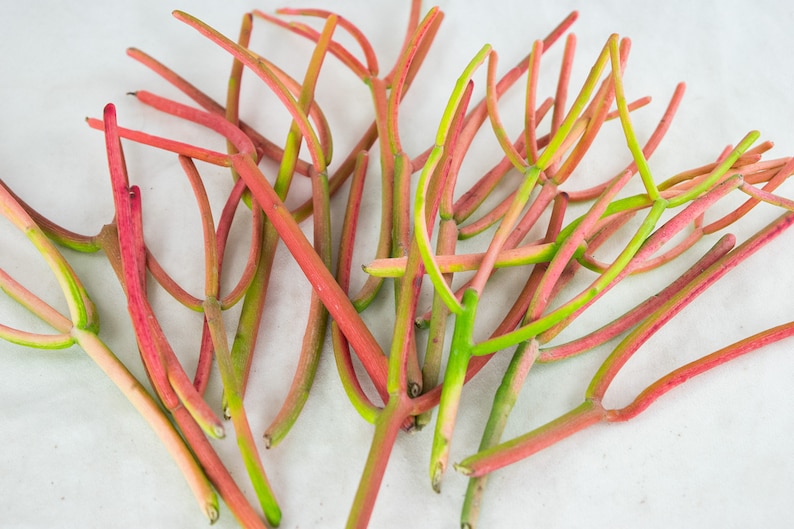
Source: Etsy

Pests and Common Problems
Euphorbia tirucalli ‘Sticks on Fire’ is generally resistant to most pests and diseases. However, it may occasionally attract common succulent pests such as mealybugs, scale insects, and spider mites. Regularly inspect the ‘Fire Sticks’ for any signs of infestation, such as sticky residue, webbing, or small insects. If pests are present, treat them with natural or organic insecticides or use a gentle solution of soapy water to remove them.
As an Amazon Associate I earn from qualifying purchases at no additional cost to you.
Fix the pest problem on your succulents and cacti with these popular insecticides.
It is important to note that Euphorbia tirucalli ‘Sticks on Fire’ produces a milky sap that can be irritating to the skin and eyes, so take precautions when handling the succulent. Wear long sleeves, gloves, pants and eye protection so you don’t get burned!
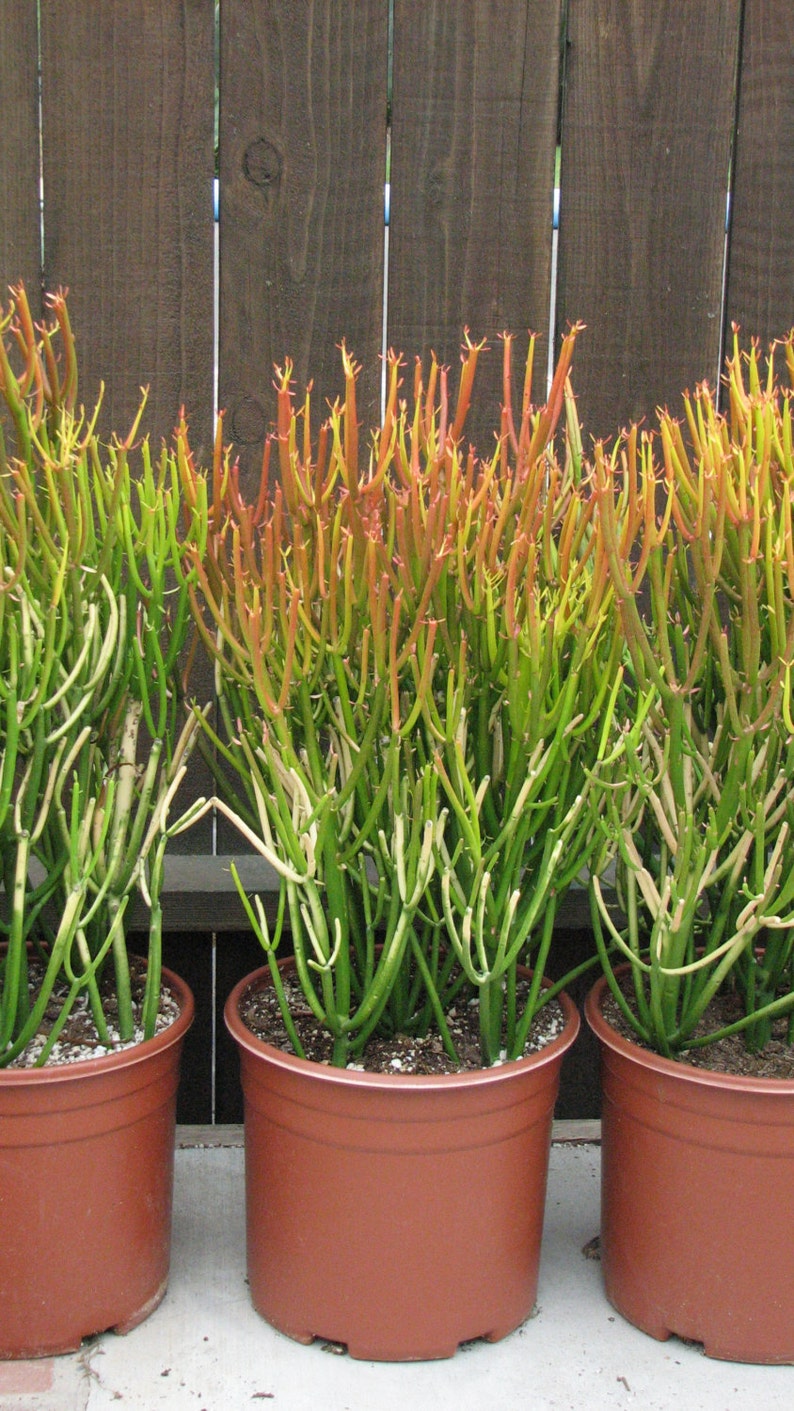
Source: Etsy
One common problem with Euphorbia tirucalli ‘Sticks on Fire’ is stem rot, which can occur if the succulent is overwatered or exposed to excessive moisture. To prevent stem rot, ensure that the soil is well-draining and avoid overwatering. If you notice any signs of rot, such as soft or blackened stems, remove the affected parts immediately to stop the spread of the disease.
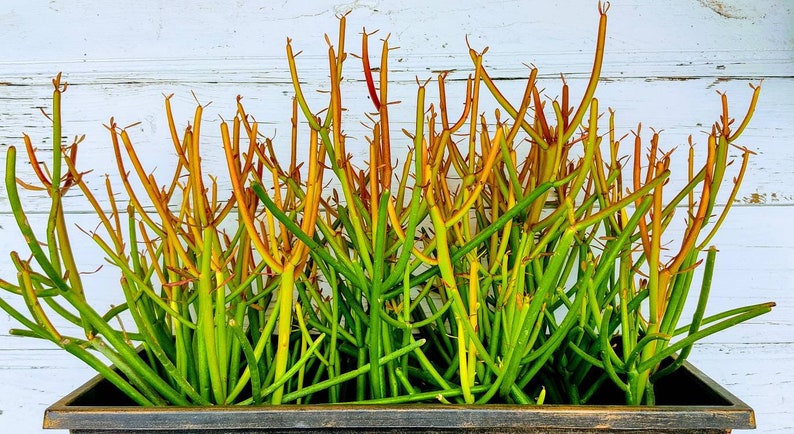
Source: Etsy
Another issue that may arise with Euphorbia tirucalli ‘Sticks on Fire’ is sunburn. Although the succulent thrives in full sun, it can get sunburned if suddenly exposed to intense sunlight without proper acclimation. To prevent sunburn, gradually introduce the ‘Fire Sticks’ to higher levels of direct sunlight over a period of time, allowing it to adjust to the new light conditions.
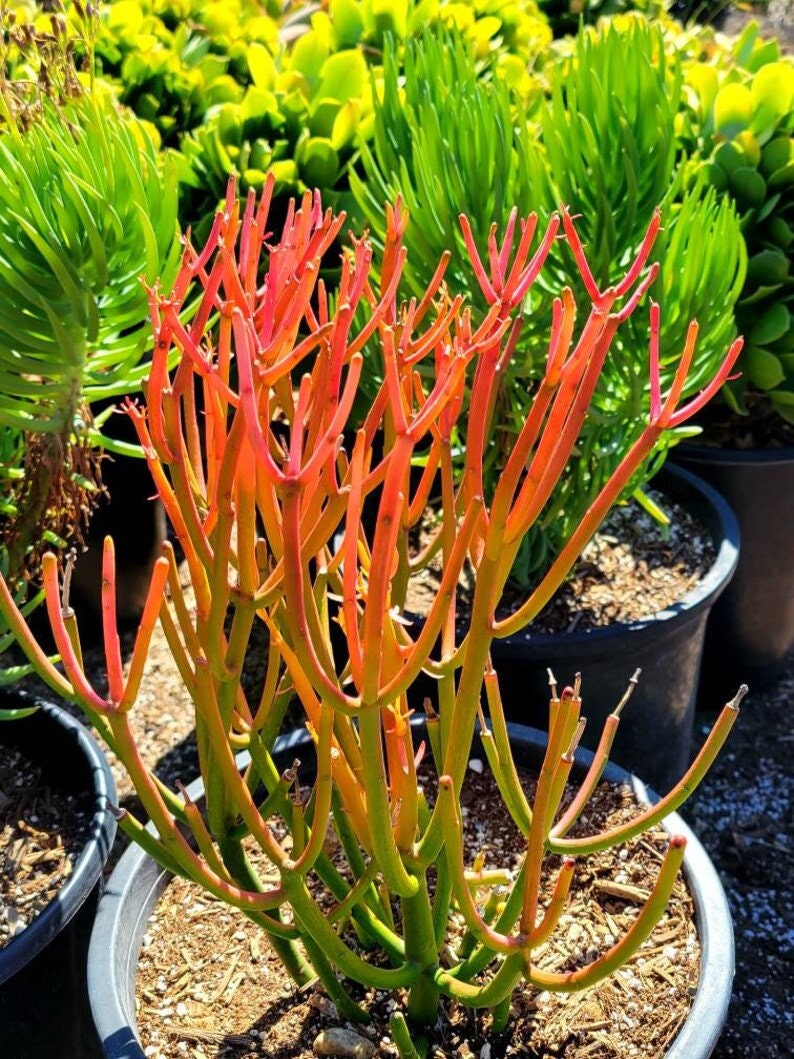
Source: Etsy
Euphorbia tirucalli ‘Sticks on Fire’, commonly known as ‘Fire Sticks’ or ‘Pencil Cactus’, is a stunning succulent plant that adds a touch of vibrant color to any indoor or outdoor space. With its striking red-orange stems and minimal care requirements, it is an excellent choice for succulent enthusiasts of all levels. By providing the right amount of light, water, and well-draining soil, you can enjoy the beauty of this succulent while keeping it healthy and thriving.
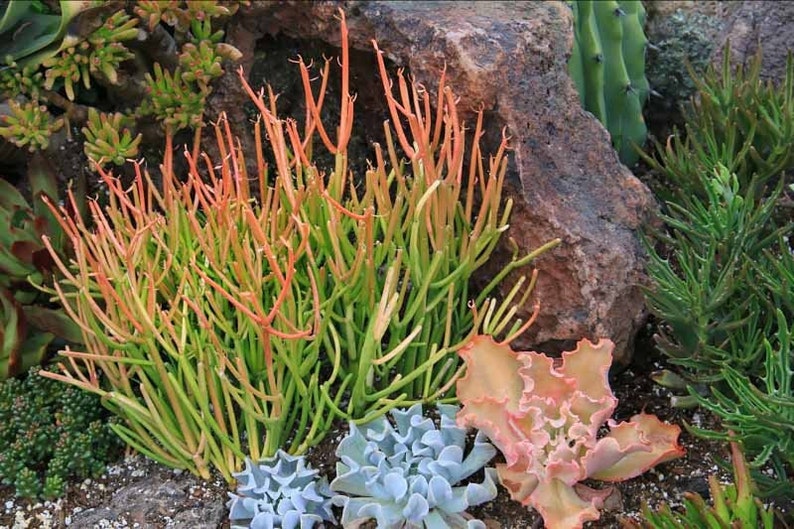
Source: Etsy
Remember to take precautions when handling Euphorbia tirucalli ‘Sticks on Fire’ due to its milky sap and keep an eye out for any pests or common problems that may arise. With proper care and attention, your Euphorbia tirucalli ‘Sticks on Fire’ will continue to impress with its unique and eye-catching appearance.
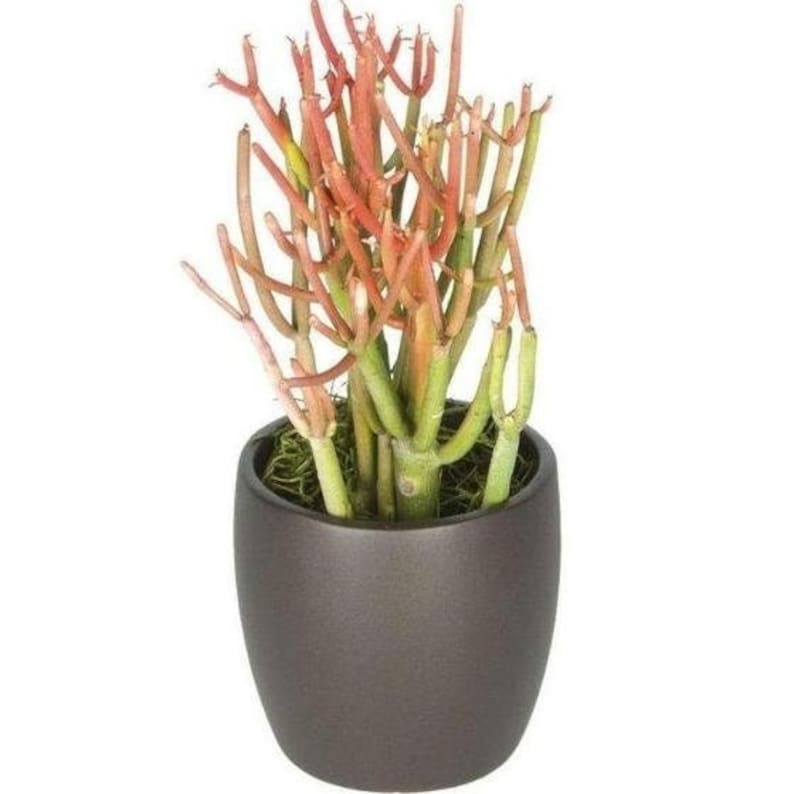
Source: Etsy

